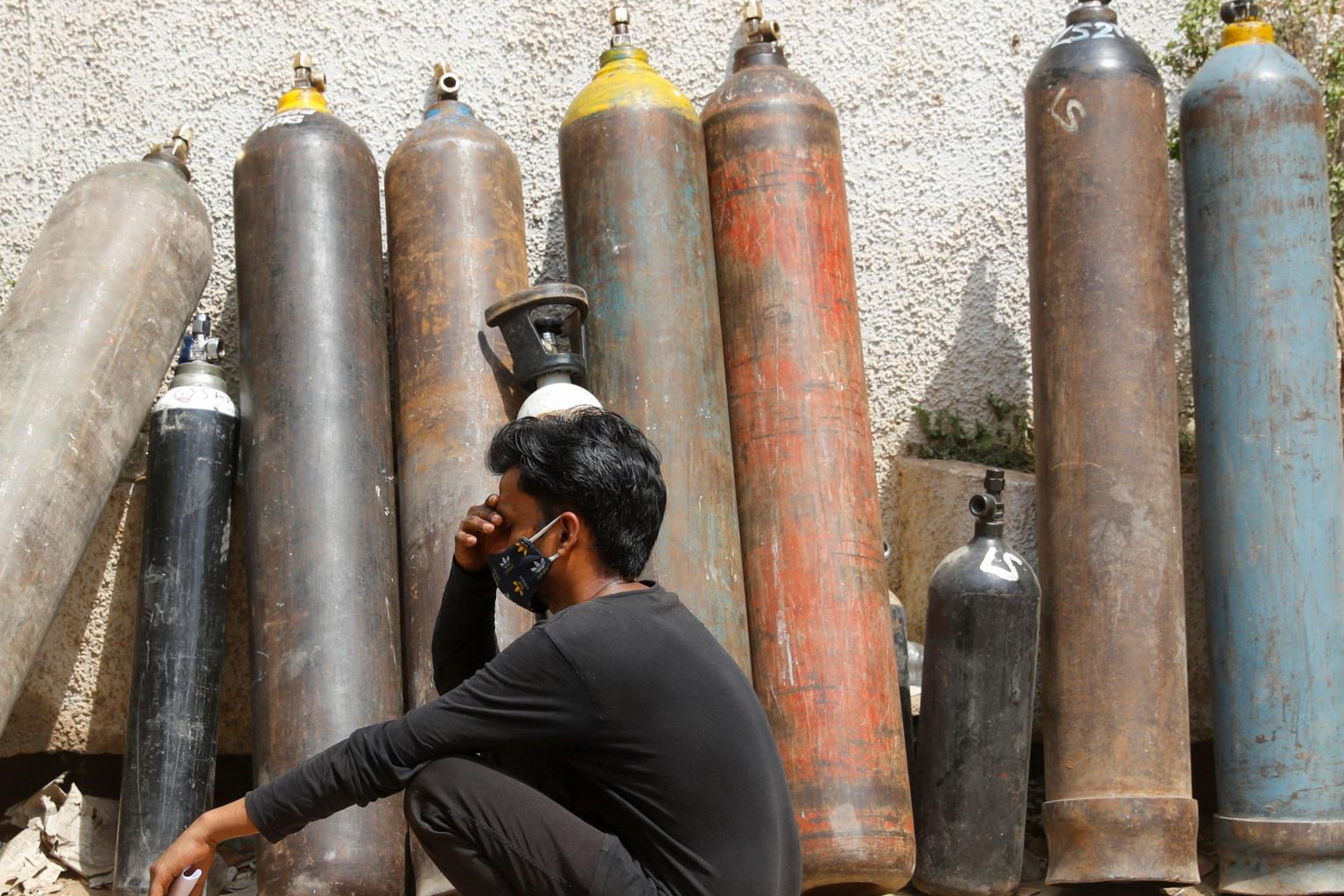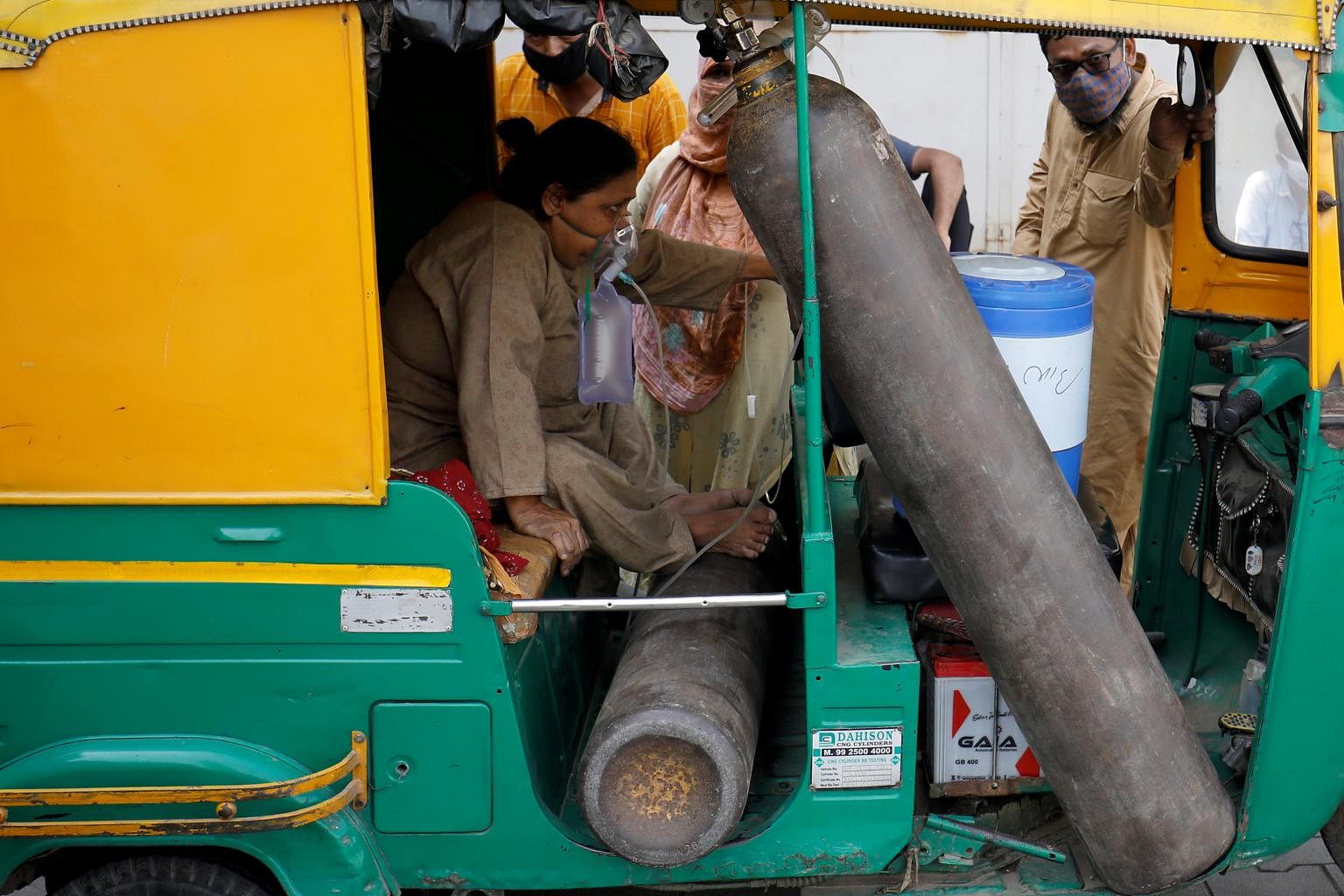India's Covid-19 oxygen crisis: Why is there a deadly crunch?
Sign up now: Get insights on Asia's fast-moving developments

A man waits outside a factory to get his oxygen cylinder refilled in New Delhi, on April 28, 2021.
PHOTO: REUTERS
Follow topic:
NEW DELHI (AFP) - A devastating surge in coronavirus infections has exposed India's dilapidated health infrastructure and a deep shortage of oxygen - a key treatment for seriously ill Covid-19 patients.
AFP looks at the reasons behind the shortage.
Why is medical oxygen vital?
Oxygen therapy is crucial for severe Covid-19 patients with hypoxaemia - when oxygen levels in the blood are too low.
"Some clinical studies show that up to a quarter of hospitalised (Covid-19) patients require oxygen therapy and upwards to two-thirds of those in intensive care units," community health specialist Dr Rajib Dasgupta told AFP.
"This is why it is imperative to fix oxygen supply systems in hospital settings as this is a disease that affects the lungs primarily."
Experts have long raised the alarm about shortages of medical oxygen in India and other poor countries to treat pneumonia, the world's biggest preventable infectious killer of children under five.
But the government has for years failed to invest enough money into such infrastructure, experts say.
Does India produce enough oxygen?
The short answer: Yes.
Experts say the vast nation of 1.3 billion people is producing enough oxygen - just over 7,000 tonnes a day. Most is for industrial use, but can be diverted for medical purposes.
The bottlenecks are in transport and storage.
Liquid oxygen at very low temperatures has to be transported in cryogenic tankers to distributors, which then convert it into gas for filling cylinders.
But India is short of cryogenic tankers.
And such special tankers, when filled, have to be transported by road and not by air for safety reasons.
Most oxygen producers are in India's east, while the soaring demand has been in cities including financial hub Mumbai in the west and the capital Delhi in the north.
"The supply chain has to be tweaked to move medical oxygen from certain regions which have excess supply to regions which need more supply," the head of one of India's biggest medical oxygen suppliers Inox Air Products, Mr Siddharth Jain, told AFP.
Meanwhile, many hospitals do not have on-site oxygen plants, often because of poor infrastructure, a lack of expertise and high costs.
Late last year, India issued tenders for on-site oxygen plants for hospitals. But the plans were never put into action, local media report.
What's being done?
The government is importing mobile oxygen generation plants and tankers, building more than 500 new plants and buying portable oxygen concentrators.
Industries have been ordered by the government not to use liquid oxygen.

Oxygen therapy is crucial for severe Covid-19 patients with hypoxaemia - when oxygen levels in the blood are too low.
PHOTO: REUTERS
Oxygen supplies are being brought to hard-hit regions using special train services.
The military has also been mobilised to transport tankers and other supplies domestically and from international sources.
Emergency medical supplies - including liquid oxygen, cryogenic tankers, concentrators and ventilators - are being flown in from other countries in a huge aid effort.
What's happening on the ground?
Oxygen shortages are still affecting badly-hit regions despite the measures to boost supply, transport and storage.
Reports have emerged of hospitals asking patients to arrange for their own cylinders and of people dying even after being admitted due to low oxygen supplies.
Social media platforms have been filled with posts by desperate families hunting for cylinders and refills.
Meanwhile, there is a growing black market for cylinders and concentrators sold far above their usual retail prices.
The shortages have sparked outrage and frustration in Delhi.
"The government did not plan in time," sales executive Prabhat Kumar told AFP. "Had it been prepared, we would not have to suffer like this for beds and oxygen."

